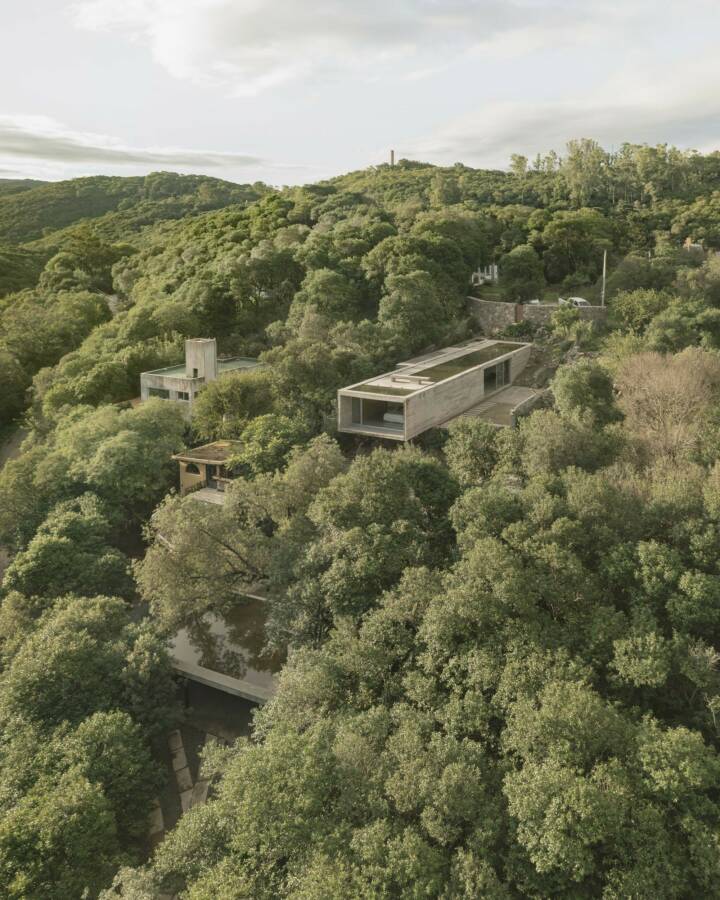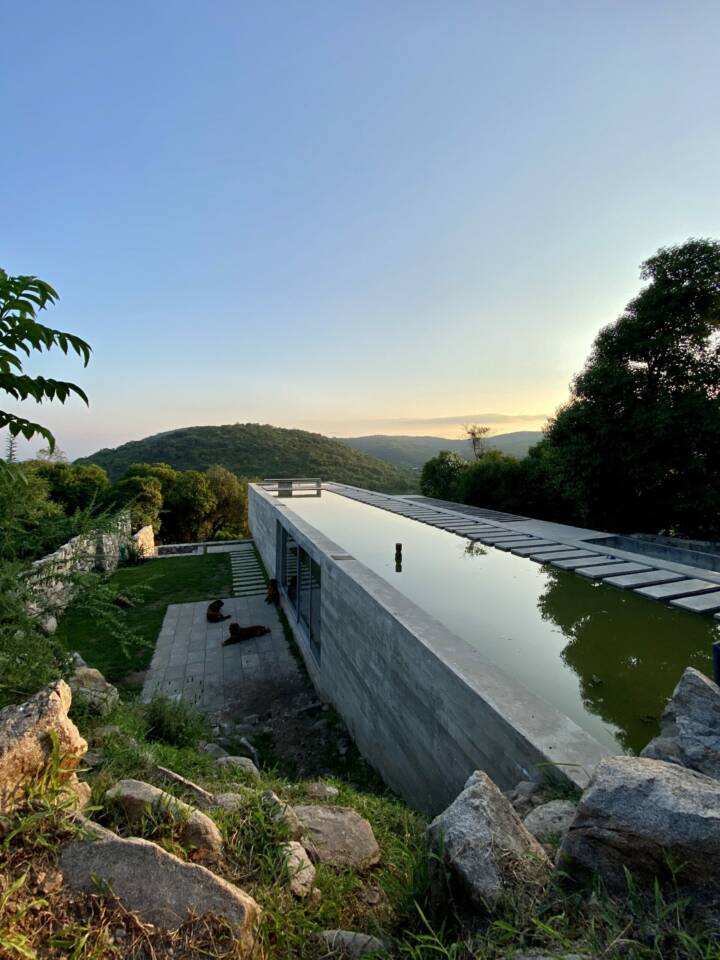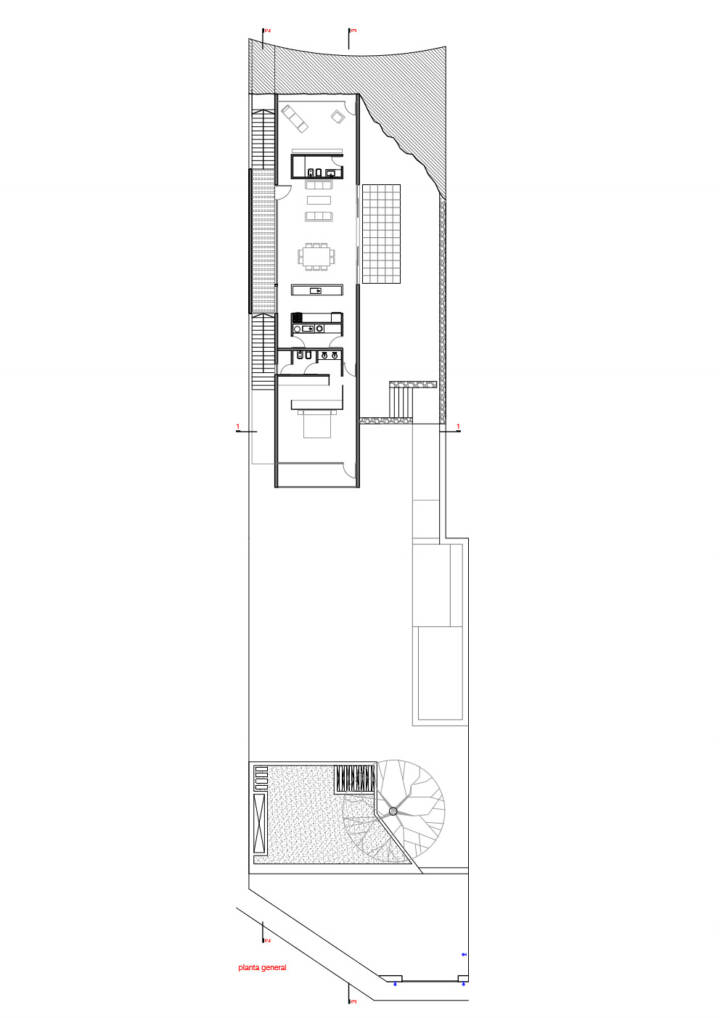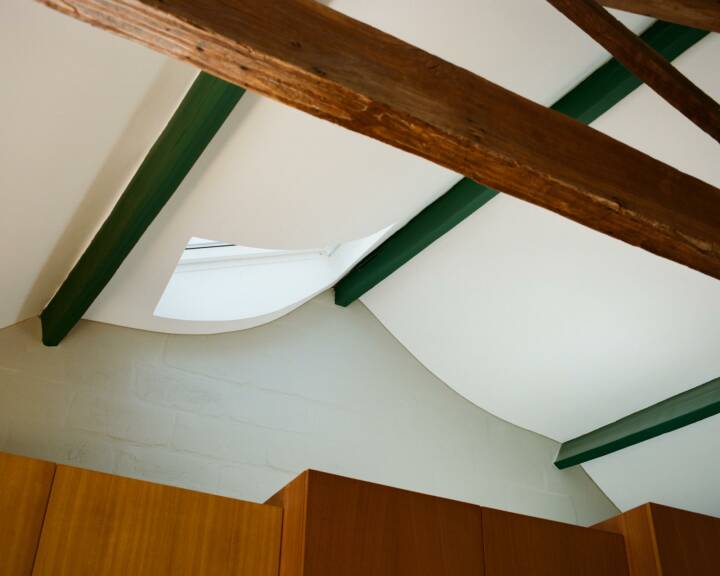Architects: Agustín Lozada Photography: Federico Cairoli Construction Period: 2016 Location: Río Ceballos, Argentina
The 3 elements house is a 200m2 single-family house located in Rio Ceballos, Córdoba, implanted on a plot of land that has an irregular geometry and a rugged topography, typical of the Sierras Chicas area. The architectural concept comes from a search to achieve simplicity, without falling into simplicity, with a total absence of ornamentation and the free resolution of detail.
In response to a slope of 15 meters between the ends of the lot and a width of 13 meters, it was decided to propose a vierendeel beam, with one end embedded in the mountain and the other end cantilevered, resolving from this concept, the structure, materiality and envelope of the house, since a reinforced concrete tube is generated. seen, inside which the architectural program of a single-family house is housed, for a couple. The plant is resolved from the structural proposal, framed by a container 26 meters long, by 5.20 meters wide. Inside this rectangle, there are 2 sanitary islands and between them, spaces are generated for the main activities, which demand a larger surface area, such as the bedroom, the study and the living-dining room. The fluid circulation that is generated around these boxes/islands produces a great spatial dynamism.
Read MoreCloseThe house has 2 entrances: The daily income is given by the lower part of the lot, while the main income is presented at the top of it. The street level is above the roof, which acts as a large reception square/viewpoint, from where you can see an imposing view of the mountains and the city of Cordoba. It is covered with reinforced concrete and flooded, resolving the materiality of the square, providing thermal and energy balance inside, at a low cost and contributing to the natural environment. The materiality of the house follows the concept of the use of raw, bare noble materials, expressing its nature and generating a respectful relationship with the environment. In addition to concrete, local stone, wood and glass were used.
Text provided by the architect.












































